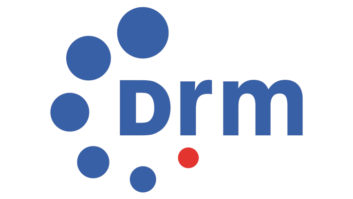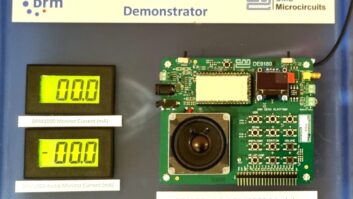Don Messer of the IBB had to remind participants that, for all the talk of Ibiquity’s HD Radio system, there are other formats for digital radio in active use around the world.
“I’m the only one not talking about HD Radio today.”
He was speaking this spring at a presentation on digital radio during the Broadcast Engineering Conference of NAB2005. Messer’s topic was the status of the international Digital Radio Mondiale standard.
While DRM testing thus far has focused largely on international broadcasting, both in the shortwave bands and on high-powered mediumwave transmitters in Europe and Asia, Messer said the DRM family of standards soon will be expanded to include frequencies above 30 MHz.
That encompasses not only the familiar 88-108 MHz FM band, but also the Eastern European FM band in the 60 MHz range and the Japanese FM dial from 76-90 MHz.
Tests
Messer, director of the International Broadcasting Bureau’s Spectrum Management Division, updated engineers on the progress of worldwide tests of DRM, which have taken place in Canada, Mexico, Brazil, New Zealand, China, India, Iran, Kuwait and many European nations.
Among the more promising tests, Messer said, were those in Mexico and Brazil, where the little-used upper reaches of the shortwave spectrum were employed to test the use of DRM transmissions to carry multiple low-bandwidth spoken-word programs on a single 10 kHz channel.
“There is an opportunity for many, many new local stations” through the use of DRM in that spectrum, Messer said.
Even across the broad expanses of a country as large as Brazil, Messer said, the use of DRM on shortwave could allow a broadcaster to blanket the nation with as few as three or four transmitters.
On the medium-wave spectrum, Messer said tests have ranged from huge 700 kW transmitters in the Mediterranean to a “single-frequency network” in Berlin that covered the city with just three 100-watt transmitters synchronized on one channel.
“That’s 300 watts to cover 5 million people,” Messer said.
Helping to make that possible is DRM’s performance at very low signal levels and in high-noise conditions. Messer presented the results of a study conducted from analog and DRM transmissions on a government transmitter in Skopje, Macedonia, in which analog AM transmissions at 1200 kW were compared with 700 kW DRM transmissions in one of the less robust modes offered by the DRM standards.
Using a test van that traveled across Macedonia and neighboring Greece and Italy, researchers found that the AM transmissions were listenable only when the signal-to-noise ratio exceeded 30 dB and the received field strength of the transmissions exceeded 60 dBuV/m.
By contrast, Messer said, DRM reception remained reliable down to 20 dB S/N and 45 dBu of signal.
“The dominant variable was signal-to-noise ratio,” Messer said. “If it’s better than 20 (dB) you’re OK, less and you’re in trouble.”
Receivers
Messer’s observations were echoed by session attendee John Rodenbarger of Purdue University in Indiana. He uses a software-based decoder to listen to DRM tests on shortwave from several transmitters.
Rodenbarger said his reception of DRM signals from the Radio Nederland transmitter on Bonaire in the Caribbean is good to about 21-22 dB of signal-to-noise ratio, considerably better than in analog mode.
“When these (DRM) signals mute, the AM stinks,” Rodenbarger said.
Messer said audio quality on the DRM transmissions was noticeably better than on AM as well. “The quality is very much like monophonic FM in a 150 kHz channel,” he said.
While several shortwave broadcasters have begun offering DRM transmissions on a regular basis, receiver availability remains an issue for DRM as it does for all digital radio systems.
Messer said several manufacturers plan to introduce low-cost DRM receivers at a major European consumer electronics show this fall, including portable models that will receive standard AM and FM as well as DRM and the Eureka-147 digital system in use in Canada and Europe, all for a target price of about 100 Euros.
And he said tests of the DRM system will continue.
“You can expect an increase of 20 to 40 percent or more in the next year or so, independent of whether people buy receivers,” Messer said.












